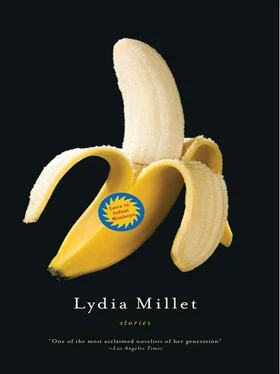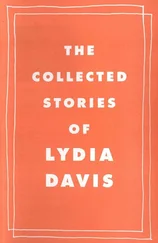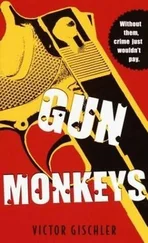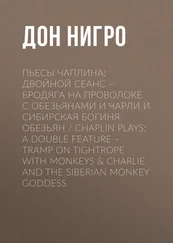The attendant opened the penthouse door for him.
“You beat me here,” he told her. Usually he did not attempt these minor exchanges, but he was nervous and needed to fill the space.
“Poor Blackie,” she said, as he unclipped the leash and hung it. She knelt down and leaned her face against the dog’s curly flank. “My husband’s allergic to dogs. It’s really bad — I mean, he breaks out in rashes, he gets asthma attacks, nothing helps. Otherwise. . I feel so bad I can’t keep Blackie in the family.”
The dogwalker stared at her, a realization dawning. It was almost two years now that he had worked for them, and it had never occurred to him that she was the violinist’s daughter.
He had assumed she was paid for her services.
“What’s wrong?” asked the daughter. “Is something the matter?”
“Oh no,” he said, and shook his head. “Nothing. I am going to sleep on it.”
This time the elevator was empty. It had mirrors on every wall and he watched the long line of reflections as they descended, he and Sir Henry. In the mirror he saw infinite dogs lie down.
Thomas Edison and Vasil Golakov
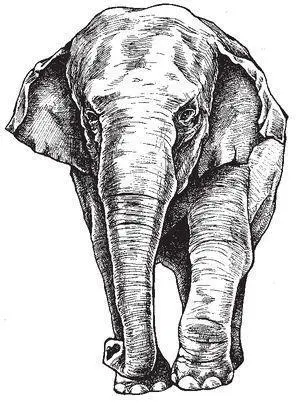

IN DISCUSSING THE ABRUPTdismissal of longtime retainer I. Vasil Golakov from his service in the Edison ménage, a number of recent scholars — most notably J. Horslow and T. Rheims, in a paper titled “Edison, Tesla, and Westinghouse: The Queer Undercurrents of Early Electricity”—have proposed that it was a homosexual advance upon Edison on the part of the Bulgarian valet that led to his sudden termination. Lesbian separatist theorist P. Valencia-Sven has taken this bold hypothesis even further, implying that it was Edison’s stern denial of his own secret yearning for the strapping Slav that compelled him to expel Golakov from his household.
But the first translation of Golakov’s letters from the original Bulgarian, by doctoral candidate L. G. Turo of Rutgers, sheds a novel light on these fanciful speculations. And although it is indeed likely that Golakov and Edison had an altercation on the day of the firing, there is scant evidence to suggest that the businessman-inventor and his faithful manservant enjoyed anything other than a purely platonic rapport.
Curiously, as the translation illustrates, the beginnings of the rift between master and domestic can be traced to an elephant execution on Coney Island.
When Edison offered to kill Topsy the elephant, in 1903, he had already lost the so-called war of the currents. It had been a war of both commerce and science, and the otherwise successful inventor had lost calamitously on both fronts. Having campaigned bitterly to persuade the public that his direct-current system was safer than its rival, alternating current — a technology harnessed by Nikola Tesla and owned by George Westinghouse — Edison was proved wrong by 1896, when alternating current won the day, and by 1897 he had sold off the last shares in his old electricity company.
But in the course of the public-relations battle, he had adopted a perverse strategy: Although opposed to the death penalty, he had promoted an electric chair that would use AC to execute convicts and thus showcase its lethality. And further to defame the rival form of current, he helped an engineer named Harold Brown publicly execute stray dogs, calves and horses with AC — despite his own professed belief in kindness, later to be quoted by animal-rights advocates. “Nonviolence leads to the highest ethics, which is the goal of all evolution,” he said. “Until we stop harming all other living beings, we are still savages.”
In any case, by 1903 the inventor had long since turned his attention to motion picture technology, then in its infancy. He had patents on some of the first motion picture machines, and when he heard there was an elephant in the area who was slated for execution, he stepped in and suggested a lethal dose of AC. His men would both set up and record the electrocution.
Topsy, the elephant in question, was a disgruntled circus and work animal who had suffered the pains of forced labor, captivity, neglect and abuse. She had responded by killing three men, the last of whom fed her a burning cigarette.
Simple shooting would not have been theatrical enough, for her owners, Thompson & Dundy of Coney Island’s Luna Park, had decided to make an example of the rogue. (The execution of animals, an odd extension of a medieval practice, assumes the animal is a moral agent, accountable to the law and therefore punishable in a formal and public context. It is noteworthy that the elephant was not being euthanized or exterminated, as vermin would, but penalized for her sins against God and man by execution qua execution. The ramifications of this apparent subversion, whereby the ultimate punishment — viz., death — also comprises the ultimate elevation/reward, are of course multifold.)
To put a just end to Topsy, therefore, an effective method was sought. Poisoning was tried but failed. Hanging was next considered, then dismissed when the ASPCA objected. (Despite its unpleasantness, to say nothing of sheer difficulty, this method would be used in 1916 in East Tennessee, on a five-ton elephant named Mary.) Finally Edison made his offer, and, ironically, though it was the unsavory nature of AC he would demonstrate with his movie, the ASPCA did not object to the method — perhaps because it was a new technology, and as such must be regarded as superior.
So Edison sent his technicians to the site of the execution and had them engineer and film the condemned animal’s fiery death. They attached electrodes to her body, strapped on sandals and set up their camera. The brief filmstrip that resulted still survives, a few grainy, gray seconds. It shows the creature being led, swaying gently, to the place of her doom; there, a white fire rages around her body. She collapses onto her side.
Edison himself was not present at the electrocution. As always, his attentions were claimed by a busy schedule. But according to Golakov, whose letters to a sister in Bulgaria were never mailed and therefore found their way into the boxes of household documents transferred to the Edison archives by the Mina Miller Edison estate, he was deeply fixated on the resulting filmstrip. The valet claimed that Edison — blithe, boastful, pragmatic to a fault and not prone to introspection or idleness — watched the filmstrip privately on a regular basis. He further claimed that Edison often conversed with it, addressing his remarks to the image of the dying elephant.
Here it should be observed that the footage, still extant and now publicly available on various Internet sites, represents an early example of what has since come to be called a “snuff” film — that is, a film that records the willful killing of an unwilling subject. Actual human snuff films have only very rarely come to light, and exist in American culture chiefly as mythic fetish objects, but animal snuff films, whose production is not for the most part illegal, are relatively common.
In Golakov’s voluminous letters, a number of the Edison/Topsy monologues are rendered. Most were reportedly delivered late at night or in the small hours of the morning, when the businessman-inventor liked to work; at these times he alone was awake in the house, and during pauses in his labor chose to closet himself in his study with one of his Projecting Kinetoscopes, watching as the blaze rose around the charring elephant’s wood and copper-shod feet.
Frequently the monologues concerned matters of business and technology too arcane to be detailed herein: the vicissitudes of carbon filaments and ore extraction, efficiency improvements at the West Orange facility, various properties of nickel hydrate. But often they were deeply personal, and, according to Golakov, Edison must have found in the elephant a faithful listener, at least at first, for his talks began as tranquil ruminations that tapered into silence only when the businessman-inventor nodded off in his leather armchair. As the disquisitions continued over weeks and months, however, they took on an argumentative tone. It seemed the elephant had begun to rebuke the businessman and had even had the temerity to dispute his assertions.
Читать дальше
